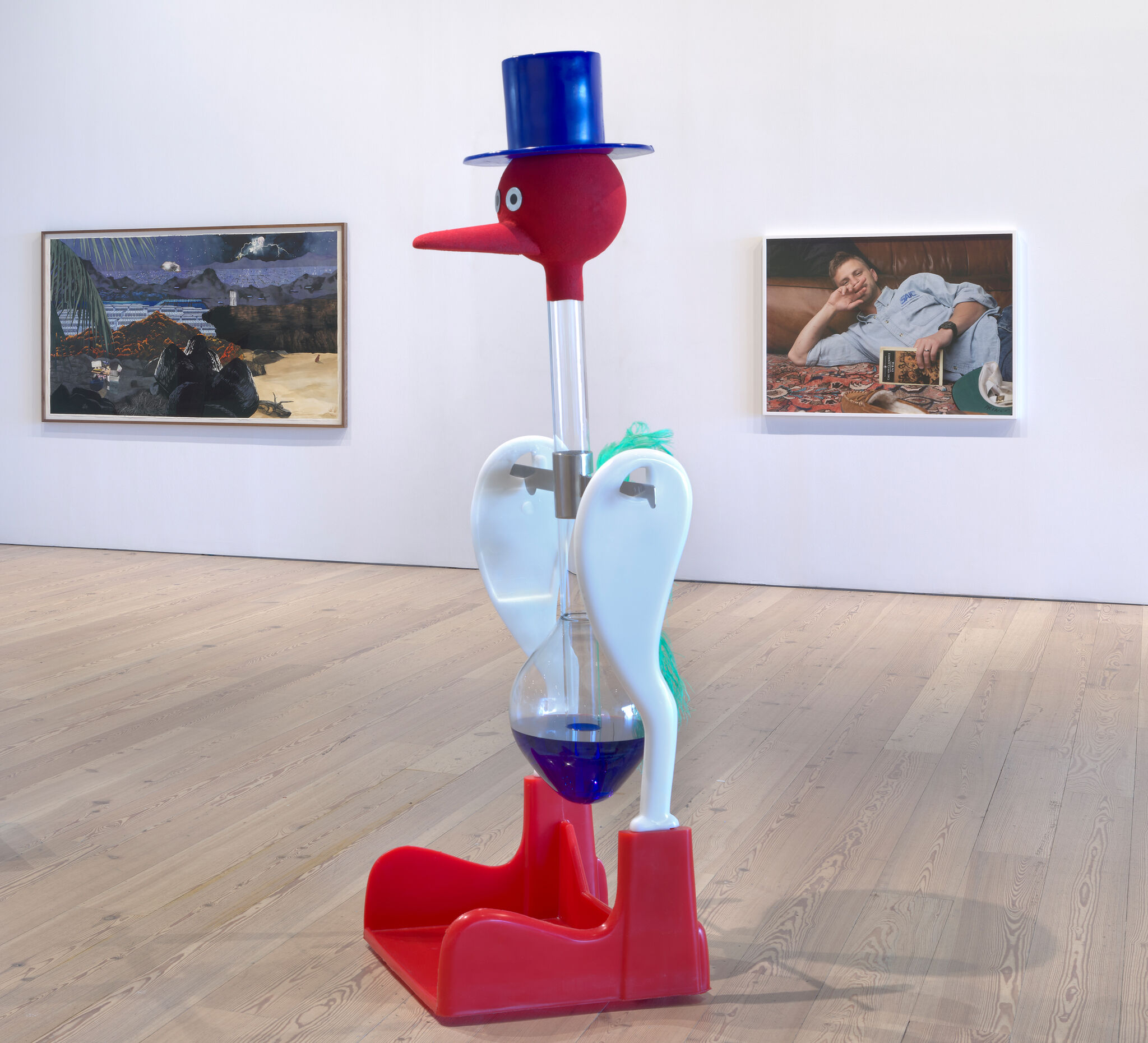Whitney Biennial 2022: Quiet as It’s Kept | Art & Artists
Apr 6–Oct 16, 2022
Whitney Biennial 2022: Quiet as It’s Kept | Art & Artists
Eric Wesley
61
Floor 5
Born 1973 in Los Angeles, CA
Lives in Los Angeles, CA
Eric Wesley has cited fascination with the drinking bird as “an embracement of the absurd and a confirmation of the profound.” He has faithfully reproduced, at human scale, an object that exists in the intersecting universes of thermodynamics and children’s toys. The lab glass body is filled with a temperature sensitive fluid. In the right environment, this allows the work to function as a heat engine, converting warmth into mechanical energy and simulating a phenomenon of perpetual motion. Wesley poses existential and timely questions: How, if at all, does it work? Where does the will to move come from?
North American Buff Tit, 2022
-
0:00
Eric Wesley, North American Buff Tit
0:00
Eric Wesley: My name is Eric Wesley. I am an artist from Los Angeles. I’ve always had an interest in kinetic sculpture.
Narrator: The drinking bird debuted as a toy in the mid-1940s. It works by heat transfer to create the motion that mimics a bird drinking water.
Eric Wesley: What it is the “dippy bird” or “lucky bird,” or it’s got various names, is a dressed up heat engine.
It’s said that Albert Einstein studied the dippy bird for four months on his desk, and couldn’t figure it out and refused to take it apart.
The movement is predicated on, basically two factors, heat, light, and humidity. The Whitney Museum space which I think is 70–72 degrees Fahrenheit, and 50–55% relative humidity. And so she feels the same as you feel.
It’s very Sisyphean. It’s very Pop in its design. I would even go so far as to say Disney or, more accurately, with what I’m trying to do, Pop art, or a kind of Koonsian dynamic, or Paul McCarthy or so. In terms of human condition, we are all always working simply by breathing, let’s say. When you sleep your heart doesn’t stop. You’re working. And so I think that there’s something about that in there, and this kind of cyclical nature of life in general, I suppose.
And I stopped at the human-size for a reason, you know if it’s just a little taller than you and looking at you as if you’re prey, if it’s twenty feet tall, it becomes about something else.

